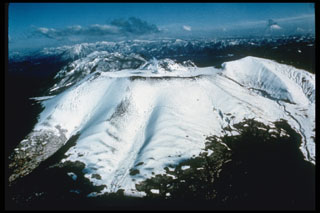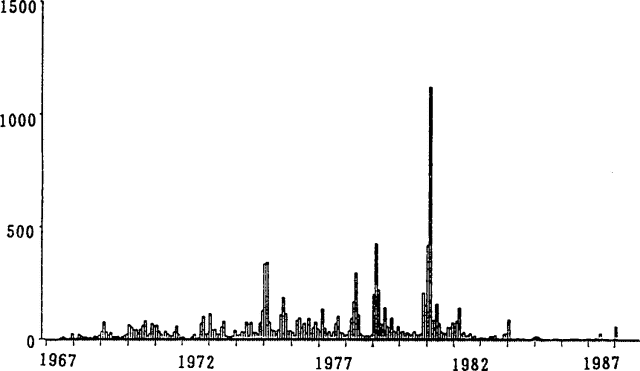Report on Shikotsu (Japan) — February 1988
Scientific Event Alert Network Bulletin, vol. 13, no. 2 (February 1988)
Managing Editor: Lindsay McClelland.
Shikotsu (Japan) Earthquake swarms
Please cite this report as:
Global Volcanism Program, 1988. Report on Shikotsu (Japan) (McClelland, L., ed.). Scientific Event Alert Network Bulletin, 13:2. Smithsonian Institution. https://doi.org/10.5479/si.GVP.SEAN198802-285040
Shikotsu
Japan
42.688°N, 141.38°E; summit elev. 1320 m
All times are local (unless otherwise noted)
Local earthquake swarms occurred 24 January-18 February. The JMA seismometer, 1.1 km NE of the summit cone, recorded 30 events in January and 124 in February. Epicenters were located at the NW somma using data from five Hokkaido University seismometers. A white plume constantly rose ~100 m.
Tarumai's strongest earthquake swarm of the past two decades began in late 1980, peaking in February 1981, when more than 1,200 shocks were recorded. Late that month ~400 m3 of ash was deposited near the crater by a very small eruption. Seismicity then declined, and the number of local events has averaged <10/month in the last few years (figure 4).
Geological Summary. The 13 x 15 km Shikotsu caldera, largely filled by the waters of Lake Shikotsu, was formed during one of Hokkaido's largest Quaternary eruptions about 31-34,000 years ago. The small andesitic Tarumaesan stratovolcano was then constructed on its SE rim and has been frequently active in historical time. Pyroclastic-flow deposits from Tarumaesan extend nearly to the Pacific coast. Two other Holocene post-caldera volcanoes, Fuppushidake (adjacent to Tarumaesan) and Eniwadake (on the opposite side of the caldera), occur on a line trending NW from Tarumaesan, and were constructed just inside the caldera rim. Minor eruptions took place from the summit of Eniwadake as late as the 17th century. The summit of Tarumaesan contains a small 1.5-km-wide caldera formed during two of Hokkaido's largest historical eruptions, in 1667 and 1739. Tarumaesan is now capped by a flat-topped summit lava dome that formed in 1909.
Information Contacts: JMA.


